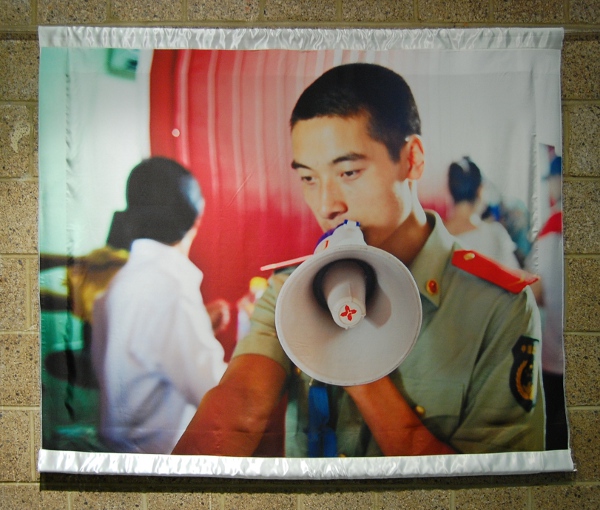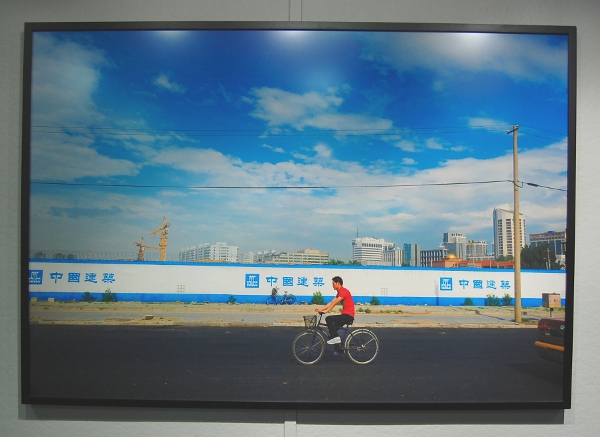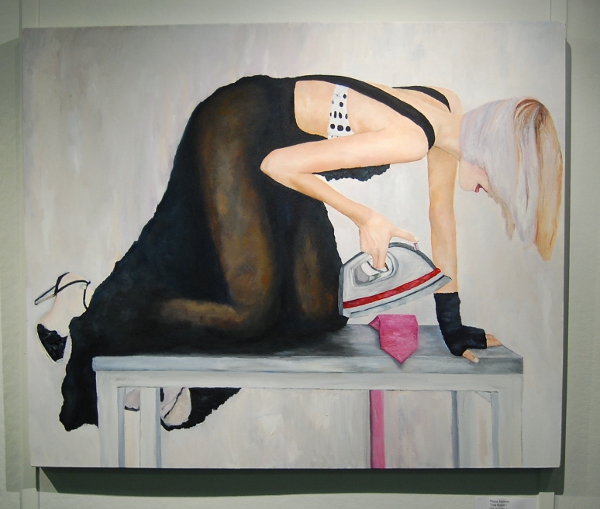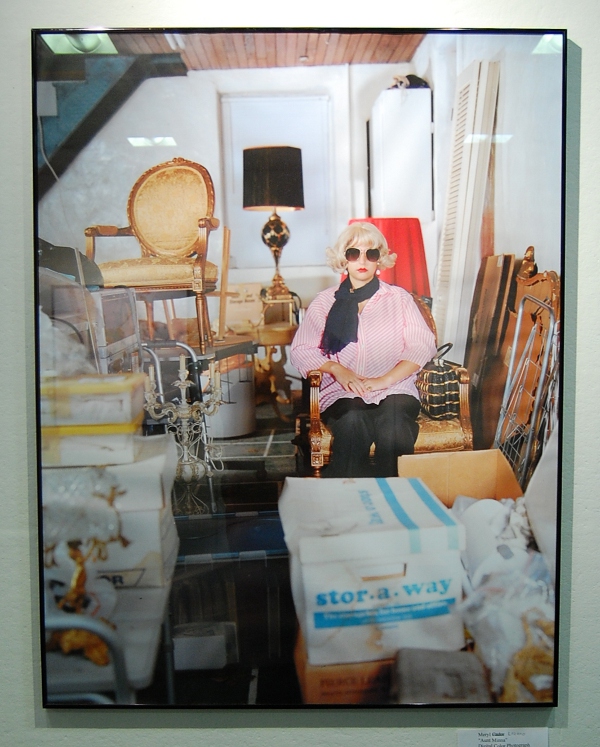
Two at International House
At the International House Philadelphia, there are two concurrent exhibits of extremely different timbre. First, there is “Faces of a New China,” a documentary photography excursion by Amanda Stevenson Lupke. Just down the hall is “The Woman Represented,” a series of works curated by Reza Ghanad which depicts images of women in a variety of complex ways.
Amanda Stevenson Lupke is a Philadelphia native but has worked for over 15 years as a professional photographer in Basel, Switzerland; London; and New York. She also founded her own Philadelphia-based business, Amanda Stevenson Photo, in 1994. In “Faces of a New China,” Stevenson examines the boom of China from rural farming economy and reclusive Communist state to an economic superpower through portraits of its citizens.
In the course of little more than a generation, China has seen a drastic shift in embracing industrialization and opening its markets to the forces of globalization. Stevenson examines this socio-economic flux by taking a closer look at the smallest segment of this movement: the individual.
Amanda Stevenson Lupke, “Blue Sky.”
Large-scale photographs depict men with megaphones in military garb and bicyclists darting off to some unknown school or job. Through these snapshots, we get a personal view of people’s daily lives in a place that is familiar but also remarkably distant from our own. A short video entitled “Shanghai Waltz” accompanies the photos. Here young people stroll around in an apparent shopping district while others perform juggling-like tricks with string in a park, all set to an electronic musical soundtrack. More work from the series can be seen at Minima, a Center City design company located at 118 North 3rd Street.
Curator Reza Ghanad takes a look at a number of ways women are portrayed in contemporary art and our social consciousness. Four artists comprise “The Woman Represented” and present their figurative works in paint and photography.
Maria Maneos, “Old Habits.”
In “Old Habits,” Maria Maneos paints a portrait of a woman in a black dress, bra exposed, seductively kneeling on an ironing board. Clearly this is a tongue-in-cheek prod at traditional gender roles. While the action in this image seems plainly exaggerated, it was not so long ago that people may have viewed it much differently. Maneos opens our minds to current standards and encourages us to think about what we believe now. Perhaps some things we take for granted now will also one day seem absurd.
Meryl Lozano, “Aunt Minna.”
The eccentric-looking woman in Meryl Lozano’s photograph “Aunt Minna” sits amongst her belongings, hinting at the temptation of consuming and collecting, as well as the preoccupation with fashion. Her glasses are huge and gaudy, and her bright pink shirt is the clear focal point. How much is the desire to acquire a learned one? To what degree is materialism a curse instead of a consolation? This photo poses far more questions than it answers.
Two wildly different exhibits at International House utilize portraiture as a means to an end. Both shows run through November 23.
International House Philadelphia is located at 3701 Chestnut Street; 215-387-5125; ihousephilly.org.
Recent Content
-
Artsarticle ·
-
Artsarticle ·
-
Artsarticle ·



